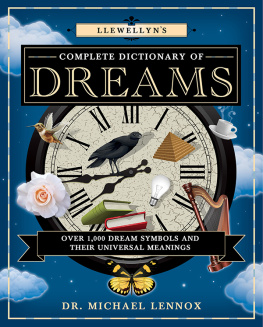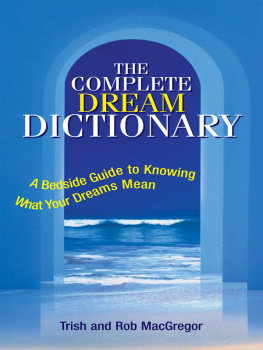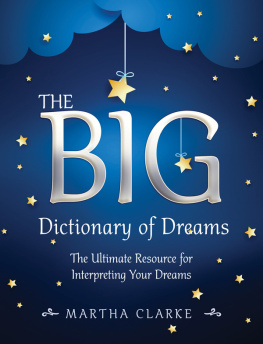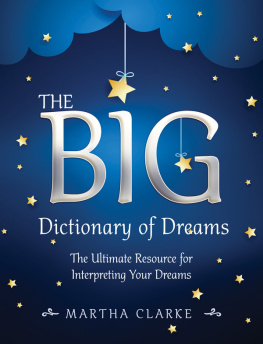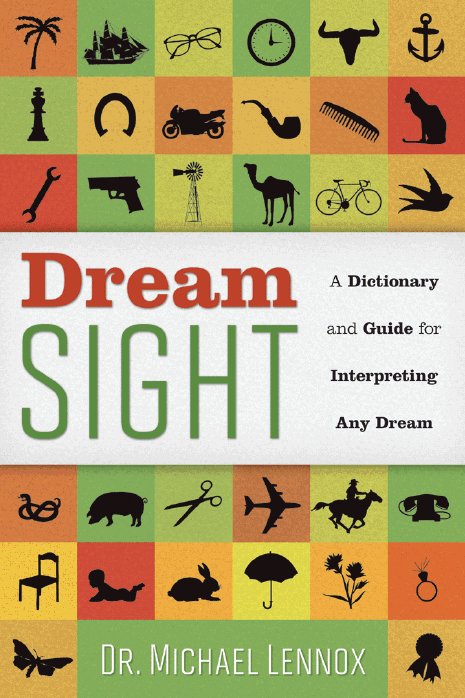
About the Author
Dr. Michael Lennox is one of Americas most recognized and respected dream experts, having spent the last twenty years interpreting thousands of dreams in workshops, in the media, and for corporate and private clientele. With a doctorate in psychology, Dr. Lennox has been deeply influenced by Carl Jungs theories on dreams. He is also a noted astrologer, intuitive, and authority on all matters of spiritual psychology. A highly sought after media expert, Dr. Lennox has been seen internationally by millions of viewers, beginning with the Sci Fi Networks The Dream Team with Annabelle and Michael, which premiered in January 2003. Since then, he has also been featured on the Emmy Award winning reality show Starting Over, Soap Networks Soap Talk, MTVs Myths and Urban Legends, National Lampoons Editorial Desk, The Wayne Brady Show, The Gregory Mantell Show , as well as local news broadcasts in Los Angeles and Denver. His frequent radio appearances showcase his work on a monthly basis on Sirius Satellite Radios Playboy Channel, The Rolonda Watts Internet Radio Show, and with Canadas premiere talk jock Andrew Krystal in Toronto. He lives and practices in Los Angeles.
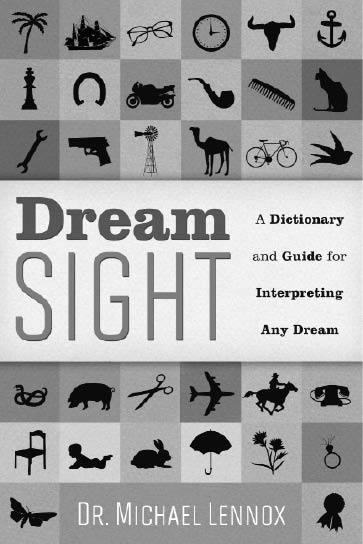

Llewellyn Publications
Woodbury, Minnesota
Dream Sight: A Dictionary and Guide for Interpreting Any Dream 2011 by Michael Lennox, PhD.
All rights reserved. No part of this book may be used or reproduced in any matter whatsoever, including Internet usage, without written permission from Llewellyn Publications, except in the form of brief quotations embodied in critical articles and reviews.
As the purchaser of this e-book, you are granted the non-exclusive, non-transferable right to access and read the text of this ebook on screen. The text may not be otherwise reproduced, transmitted, downloaded, or recorded on any other storage device in any form or by any means.
Any unauthorized usage of the text without express written permission of the publisher is a violation of the authors copyright and is illegal and punishable by law.
First e-book edition 2011
E-book ISBN: 9780738728643
Book design by Donna Burch
Cover art Art Explosion Image Library, Dover
Cover design by Ellen Lawson
Editing by Sharon Leah
Interior art Art Explosion Image Library
Llewellyn Publications is an imprint of Llewellyn Worldwide Ltd.
Llewellyn Publications does not participate in, endorse, or have any authority or responsibility concerning private business arrangements between our authors and the public.
Any Internet references contained in this work are current at publication time, but the publisher cannot guarantee that a specific reference will continue or be maintained. Please refer to the publishers website for links to current author websites.
Llewellyn Publications
Llewellyn Worldwide Ltd.
2143 Wooddale Drive
Woodbury, MN 55125
www.llewellyn.com
Manufactured in the United States of America
Contents

WELCOME TO DREAM SIGHT
DREAMS: THE BASICS
TYPES OF DREAMS
THE DREAM WORK

THE DREAM DICTIONARY
acknowledgments
There are many people to whom I am incredibly grateful; foremost are all those who said to me along the way, When is your book going to be done? I definitely want a copy! The anticipation and desire expressed by this legion of friends, colleagues, and acquaintances was integral to my constant battle with writers block, procrastination, and my ever-present desire to lie on the couch and watch movies. If I had known how long it takes to write a book like this, and how difficult the process is, I might never have undertaken the challenge.
Many thanks must be given to Lynn Pentz for getting the ball going; she was first to tell me I needed to examine how I interpreted dreams and formulate a structure that could be presented to others. My deepest gratitude goes to Lawrence Monoson: life is much more interesting now as a result of his staggering capacity for truth and courageous mirroring. He provided the challenge and the inspiration that helped me to finish this project with enthusiasm and focus.
I celebrate the hundreds of dreamers I have had the privilege of working with over the years, and I wish to thank them all. Several must be mentioned by name by virtue of their direct contribution to this book: my thanks to Scott S., Todd S., Jan E., Robbie P., Michelle D., Dave S., Andy S., Virginia S., Jason G., and Tracy P. To my gentle readers: Jan, Olenka, and Virginia, I am indebted.
My first editor, author Robin Palmer, and I met in an unlikely setting for a professional partnership to form, and I am grateful for the ridiculously casual conversation that led us to a wonderful collaboration. Additional thanks to Andy Schreiber for his keen eye, flawless grammatical acumen, and a willingness to lend his generous support.
I am certain I neglected to mention by name some people who contributed directly to the examples in these pages. Suffice to say that what I do is meaningless without those who shared their souls with me by revealing themselves as they shared their dreams.
introduction
A dream which is not interpreted
is like a letter which is not read.
The Talmud
Are dreams deep, meaningful experiences that can reveal unconscious desires or simply random brain activity? I have been asked this question over and over again. At the end of the day, the truth is that we really dont know what dreams are or why we have them. The scientist believes that truth is only what can be measured in a laboratory. The mystic believes that dreams are unmistakably the living realm of the soul. Since I consider myself half scientist and half mystic, I appreciate everything that dreams have to offer us, and I thrill with every new piece of information provided by the latest advances in neuroscience. I know dreams offer remarkable insight, and we can unlock secrets and reveal amazing elements of the human mystery when we examine them.
My experience tells me there is absolutely no wrong way to do dream work. The more objectivity we can bring to the process the deeper we are likely to go. This book stresses the importance of universality. By understanding the universal language of dreams, we can begin to know what our unconscious minds are trying to tell us.
The unconscious mind expresses itself in symbols, and these symbols form a language of their own. When I listen to someone describe a dream, I hear it as a story told in this symbolic language. Because it is not my dream, there is no emotional charge to me from these symbols. This leaves me free to apply a universal meaning when I interpret dream images, and I can do so more intensively than if I felt a personal attachment to the dream itself. After enough experiences of this detachment with other peoples dreams, I found that I could approach my own dream work with this same objectivity.
It made sense that if I could learn to be objective about my dreams, other people could do this for themselves as well. All that is needed is a fundamental understanding of the universal meaning of a dream image and a way to identify what that meaning is. This is deceptively simple, but not always easy to accomplish.
Next page

